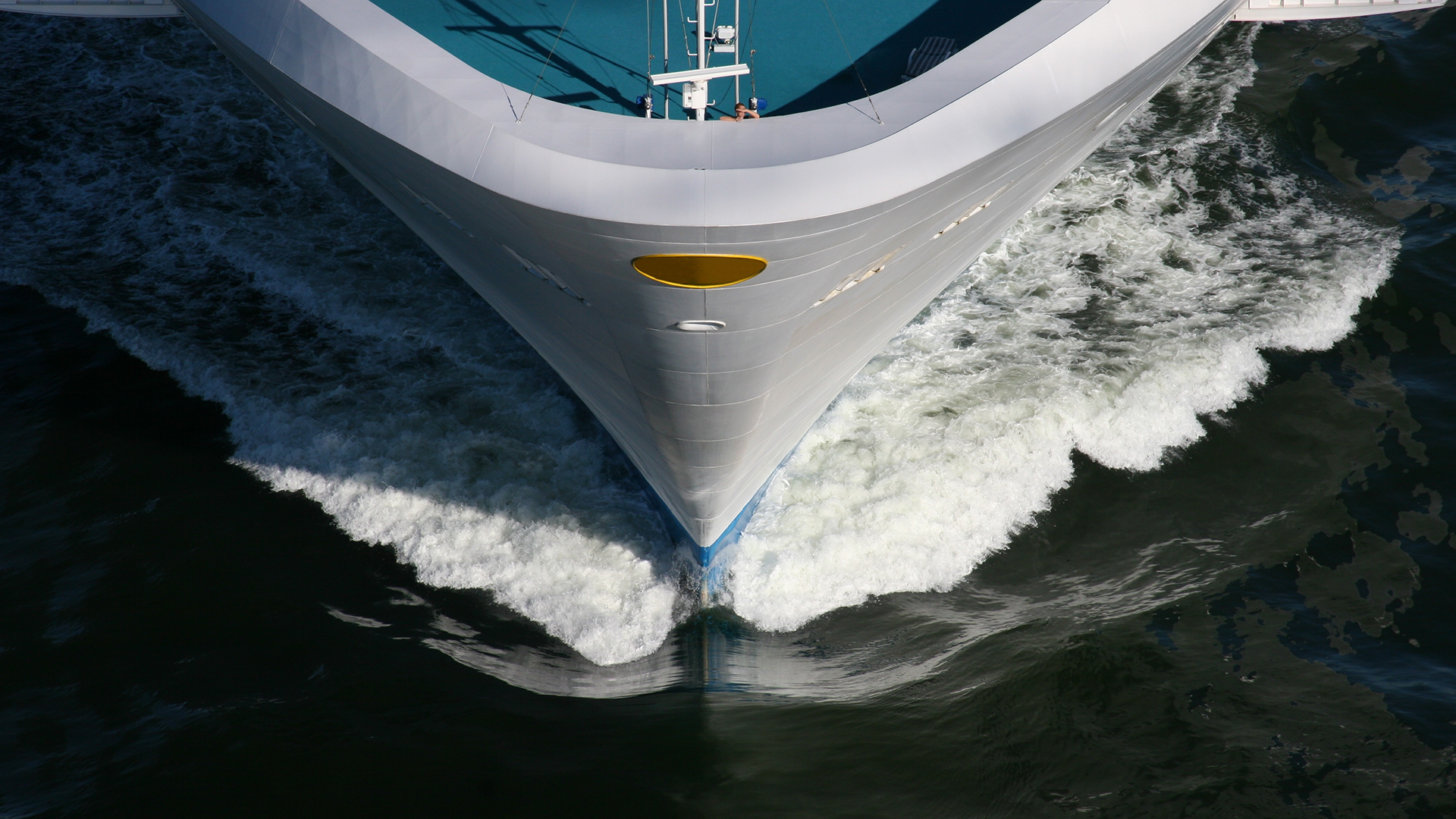


In 2021, CLIA announced that its member cruise lines pledged to pursue net-zero emissions by 2050 and at that time, were on track to reduce the rate of carbon emissions by 40% by 2030.1
This announcement signalled the industry’s commitment to enhancing environmental and sustainability governance (ESG) and initiatives, while navigating the complex, international regulatory matrix that now governs this aspect of cruising internationally.2
With varying, and frequently evolving, environmental and sustainability standards and regulations across their different regions of operations, including in Australia, it is a significant undertaking for cruise lines to remain informed and compliant with all relevant local regulations. Nevertheless, the cruise industry continues to drive investment and innovation towards a more sustainable future, in order to meet – and endeavouring to exceed – these regulations.
Australia enforces a comprehensive set of environmental regulations for cruise vessels, primarily through the Australian Maritime Safety Authority (AMSA) and in alignment with international laws and standards set by the International Maritime Organization (IMO).
In Australia, the cruise industry must adhere to the International Convention for the Prevention of Pollution from Ships (MARPOL), which includes regulations aimed at preventing accidental pollution as well as pollution from routine vessel operations, and which is implemented through the Protection of the Sea (Prevention of Pollution from Ships) Act 1983 (Protection of the Sea Act) and the Navigation Act 2012, as incorporated into federal and state legislation. Australia’s states and territories have additional environmental protection regulations and legislation enacted, making the regulatory landscape particularly complex. For cruise vessels in particular, the correct disposal of garbage per MARPOL Annex V and treatment of sewage per MARPOL Annex IV are of significance. Cruise Vessels must also comply with energy efficiency and air pollution regulations under MARPOL Annex VI.3
In April 2025, the IMO approved new draft Environmental Performance Standards (IMO 2025 Standards), which form part of the IMO’s Net-Zero Framework. In particular, the IMO 2025 Standards are aimed at achieving net-zero greenhouse gas (GHG) emissions from international shipping by around 2050. They are expected to be adopted in a new Chapter 5 of Annex VI to MARPOL in October 2025 and to come into effect in 2027, allowing time for shipping businesses to adapt their operations. In summary, the IMO 2025 Standards provide for the following:
In terms of enforcement, the Protection of the Sea Act includes a number of enforcement related provisions derived from the United Nations Convention on the Law of the Sea (UNCLOS). In Australia, AMSA continues to enforce regulations and monitor vessel compliance, by conducting regular vessel inspections. For example, in 2024, AMSA issued a marine notice under the Navigation Act 2012, limiting sulphur emissions for cruise ships while at berth in Sydney Harbour.5 More broadly, AMSA also plays a significant role in educating stakeholders in the shipping industry as regards the environment and sustainability regulatory standards in Australia.6
In continued efforts to comply with regulatory standards set for the industry, cruising has undergone significant transformation, which is also evident in Australian operations. Cruise lines have an ever-increasing emphasis on sustainability and environmental responsibility and are adopting a multitude of innovative practices to minimize the environmental impacts of their operations.
In particular, cruise lines are embracing the following key measures to meet sustainability goals:
A key focus of the cruise industry globally is the reduction of overall carbon emissions. To this end, cruise lines are investing in advanced technologies to create more fuel-efficient vessels. The introduction of Liquefied Natural Gas (LNG)-powered vessels has a been a significant step forward and various cruise lines are also exploring the viability of renewable energy-powered vessels, including those powered by wind and solar energy. Advanced biofuels, green methanol and other synthetic fuels are being researched and developed.8
In Australia, port authorities are continuing to consider the viability of shoreside power (SSP) to enable cruise vessels to power down their engines when docked. A CLIA port analysis published in September 2023, demonstrated that there were 36 cruise ports internationally that offered SSP, equating to less than 3% of the world’s cruise ports.9 This number was expected to steadily rise, with 24 ports funded for development of SSP and a further 16 planned.10 Significantly, Europe has regulated for mandatory SSP for every major cruise port by 2030.11 120 CLIA member cruise line vessels are currently capable of utilizing SSP and all CLIA member ocean cruise lines have committed to making all vessels that call on ports cable of providing SSP equipped to utilize this power by 2035 or, alternatively, able to use alternative low-carbon technologies in order to minimise emissions while docked. CLIA anticipates that by 2028 more than 210 vessels will have SSP capability.12
For the first time in Australia, cruise vessels will have access to SSP at White Bay, in the Sydney Harbour, from 2026. While an important milestone, it remains to be seen how quickly ports and terminals across Australia are able to adopt similar technology. The cost, disruption of port operations and availability of resources are some notable barriers to this important initiative. It is clear that cruise lines, ports and terminals, governments and private investors will need to work closely together to accelerate progress in port operations in this regard.
Effective waste management is crucial for minimizing the environmental impact of cruise vessels. To this end, cruise lines have implemented comprehensive waste reduction and recycling programs. Segregation of waste, sophisticated onboard recycling facilities, and establishing partnerships with local waste management companies at port destinations, have all been important steps in reducing waste across cruise operations. Some Cruise operators are now able to re-purpose 100% of onboard waste through their enhanced waste management and waste-to-energy conversion practices.13
Further, advanced water treatment systems have been installed on many cruise vessels, allowing for the purification and reuse of wastewater. In additional efforts to conserve water, many cruise lines also encourage guests to participate in water-saving practices throughout their voyages.
Cruise lines operating in Australia are required to preserve marine ecosystems, to align with states’ obligations under UNCLOS. The obligation under article 192 of UNCLOS, to protect and preserve the marine environment, has a broad scope, encompassing any type of harm or threat to the marine environment. Under this provision, States Parties have the specific obligation to protect and preserve the marine environment from climate change impacts and ocean acidification. Where the marine environment has been degraded, this obligation may call for measures to restore marine habitats and ecosystems.
In line with the above, cruise lines must adhere to strict regulations regarding ballast water discharge, prevent the spread of invasive species, support marine research initiatives, and adhere to government regulations regarding access to marine environments. By way of example, in December 2024, the New South Wales government in Australia restricted cruise vessel access to the Jervis Bay Marine Park in order to protect the marine environment.14
Promoting sustainable tourism practices is also essential for the long-term viability – and appeal – of the cruise industry, with cruise guests of the future predicted to value sustainability and eco-tourism more highly than any previous generation.15 Many cruise lines, particularly expedition cruise lines, seek to educate their guests about the importance of sustainability and eco-friendly behaviour at sea, and promote sustainable tourism practices through itineraries that minimize environmental impacts, support local businesses and economies, and ensure that tourism activities respect and preserve the natural and cultural heritage of destinations. Collaboration and partnerships with local communities and stakeholders at destination ports remain key to promoting this aspect of sustainable tourism.
When it comes to marketing and promoting ESG commitments and practices, cruise lines must ensure that any promotions and pledges made publicly regarding ESG are not in any way misleading or deceptive. Litigation arising out of allegations of greenwashing, where unfounded claims of environmental and sustainable goals and achievements have been made, is on the rise internationally.
The cruise industry and its stakeholders in Australia have developed numerous initiatives aimed at reducing environmental impacts and promoting responsible tourism. While challenges remain, not least being the complex regulatory environment at play, the commitment to innovation, regulatory compliance, and consumer engagement is paving the way for a more sustainable future. As the industry continues to evolve in Australia, ongoing collaboration with stakeholders, together with investment in – and adoption of – renewable and advanced technologies, will be key to achieving long-term environmental and sustainability goals, allowing the industry to continue to thrive in this region. However, in embracing sustainability targets, cruise lines and travel operators more generally, must be mindful of any ESG pledges made and how successfully their business is meeting those targets. Any allegations of greenwashing could seriously damage both consumer and shareholder confidence and potentially result in litigation. When creating an ESG policy, and marketing its merits, all stakeholders in the industry should be mindful of their obligations – and seek legal advice from experts where needed – to ensure compliance and minimise the risk of any adverse consequences.
For more information about creating ESG policies, please find our recent insight here: Creating an ESG Policy: Key Considerations – HFW
Footnote

